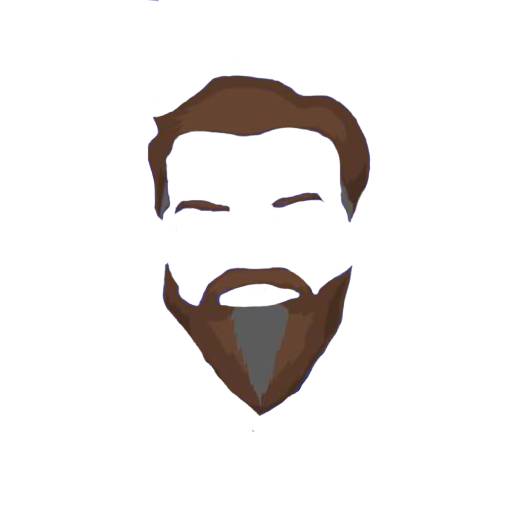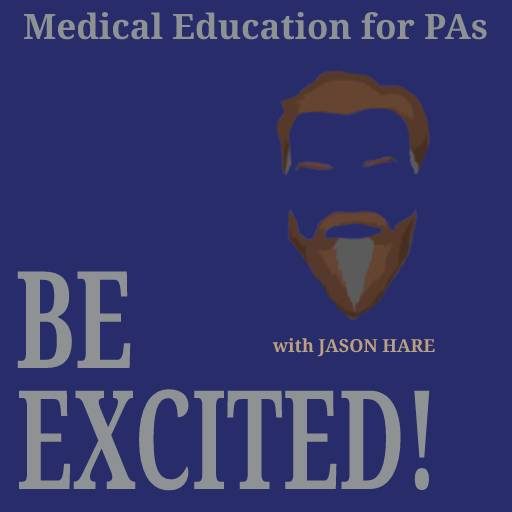
Professor Hare: [00:00:00] Hey there folks. This is professor Hare. Welcome to the Be Excited podcast coming to you from the Be Excited Retreat Center. This episode in our PA School Advising Track is the second of two episodes focused on the didactic year of PA school and surviving and thriving during that time. In the first episode, we looked at use of reference material, the fear of missing out and some ways to tackle large amounts of material.
Professor Hare: In this episode, I will discuss more study tips, self care, and more approaches to the significant amount of content that didactic year throws at students.
Professor Hare: Once again, I will start with the caveat that not all tactics for studying and survival work for all students. And you may need to pick and choose or simply find your own best practices for studying. PA school has a rapid pace and a limited time to access the significant amount of information that you need to know, approaching it with a good attitude and some insight into how you learn best will take you far.
Professor Hare: My first discussion point today is to make sure that you’re [00:01:00] seeking insight into the way that you work and be flexible about the way that you work. The topics covered in different modules in clinical medicine. For instance, often require a shift in your learning style. Hematologic conditions. For instance, typically have general and vague presentations, but lab work and treatment are more important for many topics. Renal medicine has a similar scenario Musculoskeletal or orthopedic conditions are the opposite. History and physical exam in the form of special tests are incredibly important as is imaging, but lab work relatively minimal outside of surgical clearance. Some areas of medicine have a lot of conditions that seem very similar at first, like gastrointestinal conditions or rheumatologic conditions, but there are ways to pull them apart.
Professor Hare: It can be difficult at first, but realizing that you can often differentiate these conditions into groups of diseases and disorders by the things that make them different, rather than trying to memorize a list of things that characterize every [00:02:00] disorder can be helpful. Find the things that make those conditions in that module notable.
Professor Hare: And that will allow you to remember those individual conditions far better.
Professor Hare: The next one is case study writing. For conditions t hat really cause you difficulty in any given module in medicine. A very focused way to get comfortable with those conditions is to write it up as a case study or a patient vignette, writing up a patient case that is as classic as possible.
Professor Hare: Age, race, gender, any risk factors for the most common presentations in that area can all go into that case presentation then, write the diagnostics labs, testing and imaging all first line, and then add the second line in. Then do the same with the treatments, a good source for a condensed picture of the condition you wish to write up is Current Medical Diagnosis & Treatment.
Professor Hare: Review this tactic for the concepts you struggle with at first, keeping in mind that a classic case is likely to look a lot like an exam [00:03:00] question, which can’t get very far from the classic presentations, especially in that first didactic year, when students haven’t been exposed to much of this medicine yet.
Professor Hare: The next recommendation has to do with understanding facts versus going after concepts. Facts are an easy fallback when studying you open your book or your notes or a slideshow, and try to absorb some individual facts. For instance, what is the test for Lyme disease? How do we treat a deep vein thrombosis?
Professor Hare: What kind of insulin is the long-acting type? Trying to pile up these individual facts in order to grasp an entire area of medicine is a lot of work and it’s not easily retained. However, you have structure on which to hang new information, your prerequisites from undergrad courses, like anatomy, biology, chemistry, physiology, maybe pathophysiology are all structured that you have learned already.
Professor Hare: Use those structures to place context on what you are learning now. You also have your PA [00:04:00] courses to date, all of which build more structure to your understanding as time goes on. They also give you more framework to hang that information on. For instance,
Professor Hare: rather than looking at the test for Lyme disease. Try to understand the transmission and infection with Borrelia burgdorferi, leading to the test for Lyme.
Professor Hare: Another example, rather than simply looking up how to treat a DVT, understanding the risk factors, coagulation pathways, and symptoms can help you to understand the rationale behind DVT treatment. And of course, rather than learning about long-acting types of insulin in an isolated fashion, remember that diabetes is so wrapped up in pathophysiology, that it is often best to start with the pathophysiology of diabetes in that context to make it more easily understood.
Professor Hare: You’re hanging the fact that Lantus for instance, is a long acting insulin on your knowledge of pathophysiology and why a long acting insulin would be a good idea for [00:05:00] many type one diabetics. The point here is that you have structure at any point in your career. As a student, especially use that to frame the concepts.
Professor Hare: The PANCE certification exam requires this. It asks for conceptualization of conditions by asking you case study or vignette questions. It doesn’t just ask you for facts and recall of information in a short sentence. It looks for second and third level, extension of knowledge, higher on Bloom’s taxonomy knowledge retained after learning concepts is nearly doubled in some studies when compared to discrete learning of facts. Use that accrued knowledge.
Professor Hare: You’ve earned it and make that information stick.
Professor Hare: The next discussion is about the studying environment. There have been numerous studies about the ways that a learner can best get information into their short. And then long-term memory. One of these areas studied has been the physical environment in which a learner tries to access information. And while the classroom is as consistent an environment as can possibly [00:06:00] be often the home dorm room or apartment of a student provides distraction and competing signals to a student’s brain sitting in a TV room, kitchen, living room, or other common area provides a confusing message to the mind. Is this an enjoyment or social space? Do I eat here? Do I learn here? Dorm rooms, especially can be all things to a learner and really confuse the mission.
Professor Hare: It helps to find a space with no conflicts, ideally an office with a desk lamp and desk chair, no TV, no radio put away the iPhone, et cetera. This can be difficult. The official recommendation then is to find that spot a chair, a desk, a cubbyhole at a campus building or public library that signals to the student.
Professor Hare: Welcome. It’s time to study. No other activity should occur here. No eating, scrolling, sleeping, no socializing. Context is very important here. Even if your space and options are very tight, designating, a lamp or desk [00:07:00] light can be the signal a student needs. Then leave the TV, radio, Facebook and Instagram feeds off and tuck into the material.
Professor Hare: A note about cramming.
Professor Hare: Many students describe a study method where they transitioned to studying for one courses, exams exclusively for several days prior to that exam. I would encourage you to get away from this model and study all courses simultaneously switching between topics as possible to keep yourself awake. Switching topics can make the material easier to digest and keeps the material fresh for many students. If you have maintained the study time for all courses over the course of the week, you won’t need to perform this cramming prior to one course’s exam. Multiple exams per week at different times are the rule in many PA programs rather than the exception, given the amount of material and the speed with which we progress through that material that is essentially unavoidable.
Professor Hare: I liken this to small kids playing soccer. You will see groups of kids crowded around the ball, no matter where [00:08:00] it is on the field. No passing, chasing the ball and each other around the field in an attempt to go after the thing that seems most important, the ball. Finding balance and space, whether that’s on the soccer field or between courses is the key to success here, not chasing a grade in one course at the expense of your time in another is crucial and will prevent you from falling behind in one or more courses and having to shift your attention drastically.
Professor Hare: Other suggestions that have helped some students, but I can’t make a broad recommendation to all students because unlike what we have discussed previously today, these don’t really work so much for all students. The first one, making color-coded charts of information and splitting out demographic information, presentation, history, and physical exam testing, and treatment.
Professor Hare: This is a great deal of work and as akin to our highlighting and marking discussion where, rather than learning the information with that pass, you’re simply marking it down or putting it in a color-coded chart.
Professor Hare: Group learning where you get together with a small [00:09:00] group and teach each other, the diseases and concepts on zoom, if necessary, this can work well for many students. And of course, teaching content is one of those things that we say is almost guaranteed to get that information locked into your brain and into your long-term memory.
Professor Hare: Very helpful. However, group learning can be fraught with problems. For instance. Everyone has different set of standards when it comes to learning information. One student’s “enough” is the next student’s “not nearly enough”. When it comes to that amount of information, this can cause some difficulty
Professor Hare: and may lead to some disagreements within that group. Another issue that we see with group learning is that those groups tend to become tight. They tend to become close over a period of time. And after a while, they start to socialize together as well.
Professor Hare: that can lead folks to not being willing to sit down and study with that group of friends and rather wanting to go out and do something more fun. While fun is an absolute and necessary part of everyone’s [00:10:00] day-to-day life. I would point out that if your group is not doing anything, but going out and having fun, then maybe that’s a social group and not a learning group.
Professor Hare: Switching up those groups periodically to make sure that everyone in that group is at least aware of their role and are trying to get as much of that information to their fellow students in a reasonable fashion rather than continually socializing can be very helpful.
Professor Hare: another method that I have seen students using, to learn information is transitioning all concepts as possible into flow charts and pictures that you draw or gather, from resources and cutting and pasting into a document. This has been shown to facilitate memory for some drawing, especially can facilitate a lot of information.
Professor Hare: Those flow charts can be very helpful. Again, spending a lot of time doing these kinds of things can be one of those things that takes too much time. So be careful about the amount of time you are putting into your learning methods. You still need to sleep. You still need to eat and you still need to, have some fun and, have [00:11:00] discussions back home with your family members.
Professor Hare: Those kinds of things have to happen. Use caution when using a method of learning, that takes a great deal of time away from all of the things in your life.
Professor Hare: Another method that I’ve seen, students use, to some extent successful, is some students have the PowerPoint for a lecture open simultaneously as a video is playing for instance, in asynchronous learning or while the lecture is speaking. Taking notes on the PowerPoint slides for review later on, this can be done by drawing on the PowerPoint slides in some cases, or typing into the notes field.
Professor Hare: In those slide shows. Remember the note review strategy of reading through your handwritten notes for 10 minutes at the end of class will help you to remember what you wanted to get out of those notes. Taking notes is important, but make sure that you are using them as efficiently as possible. Remember why you wrote it down.
Professor Hare: In other words.
Professor Hare: Lastly, let’s discuss sleep and self-care consolidation of learn concepts into long-term memory requires sleep eight hours [00:12:00] for some nine for others, five or six for a lucky few. I won’t get into the sleep issue as it is well covered in many studies and across legitimate internet resources, self-care in the form of sleep and dealing with life stressors is crucial. Knowing how to deal with and prioritize jobs, relationships, unexpected difficulties, time, other courses, et cetera, can prevent and minimize distractions and loss of focus.
Professor Hare: This is getting too far outside of the scope of today’s episode, but keep in mind as you arrange your most efficient approach to PA school, that you need to take care of yourself and get enough sleep on a day to day basis. While PA studies can be difficult at times, I would encourage you to remember why you chose PA in the first place.
Professor Hare: Tap your desire to understand the elements of medicine and patient care that you want to learn and be good at know that you have to get all of those areas in at a baseline level, identify herself as a good student, a rockstar future PA, and as a person who wants to [00:13:00] get all of the knowledge they can during this process.
Professor Hare: In this episode, we discussed the ways in which you can adjust your approach to PA school and the material that you will need to access and understand. Including more study tips, self-care, and more approaches to the significant amount of content. The didactic year tends to throw at students. Hopefully this has been helpful.
Professor Hare: Be sure to check out the podcast website at BeExcitedhq.com for more episodes, show notes and full transcripts of every show. Email us at [email protected]. With questions, comments, and future show suggestions. And of course follow us on Facebook and Instagram at be excited podcast for news, new episode notifications and maybe a few pictures.
Professor Hare: Thanks for listening and…Remain Excited!



